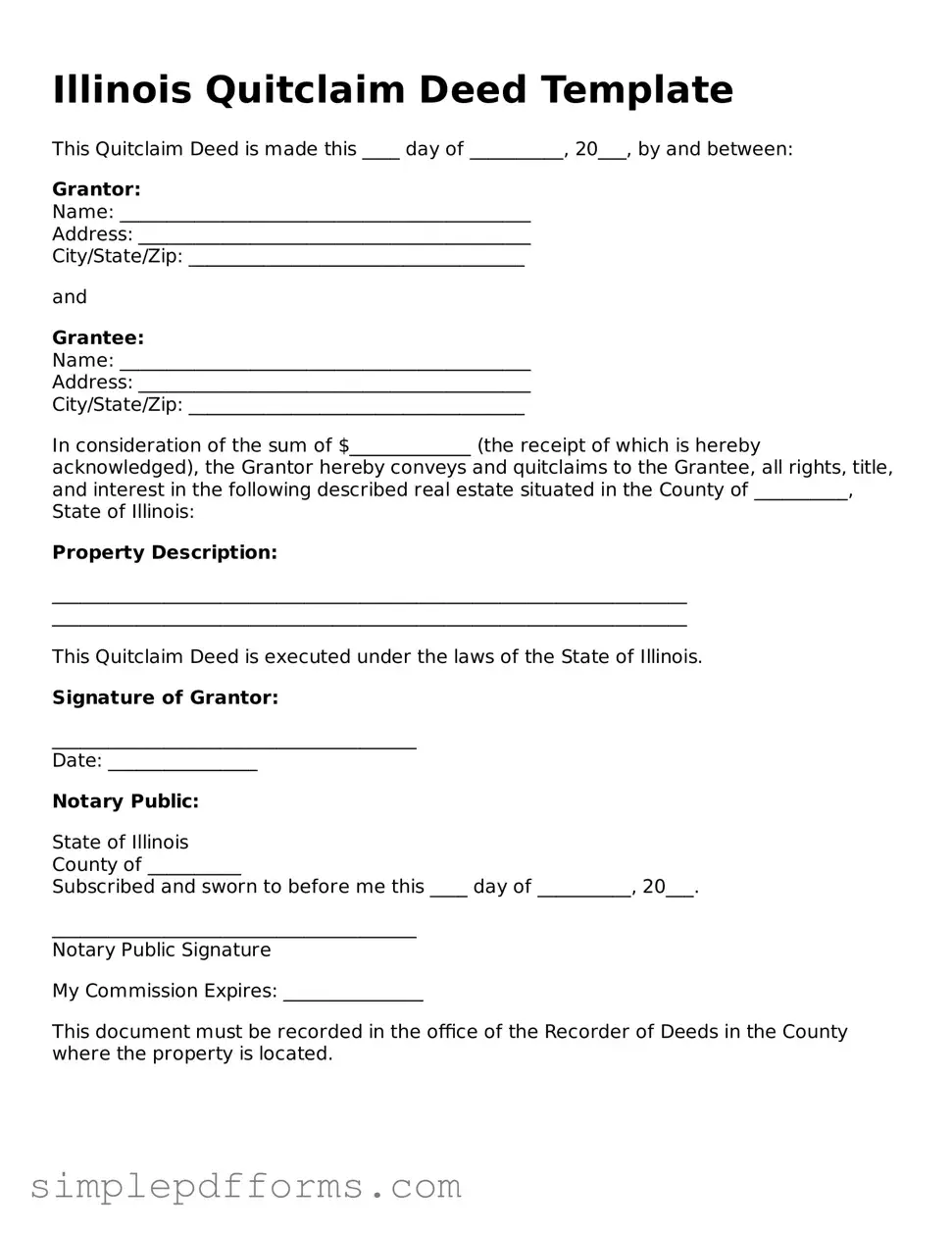Illinois Quitclaim Deed Template
This Quitclaim Deed is made this ____ day of __________, 20___, by and between:
Grantor:
Name: ____________________________________________
Address: __________________________________________
City/State/Zip: ____________________________________
and
Grantee:
Name: ____________________________________________
Address: __________________________________________
City/State/Zip: ____________________________________
In consideration of the sum of $_____________ (the receipt of which is hereby acknowledged), the Grantor hereby conveys and quitclaims to the Grantee, all rights, title, and interest in the following described real estate situated in the County of __________, State of Illinois:
Property Description:
____________________________________________________________________
____________________________________________________________________
This Quitclaim Deed is executed under the laws of the State of Illinois.
Signature of Grantor:
_______________________________________
Date: ________________
Notary Public:
State of Illinois
County of __________
Subscribed and sworn to before me this ____ day of __________, 20___.
_______________________________________
Notary Public Signature
My Commission Expires: _______________
This document must be recorded in the office of the Recorder of Deeds in the County where the property is located.
